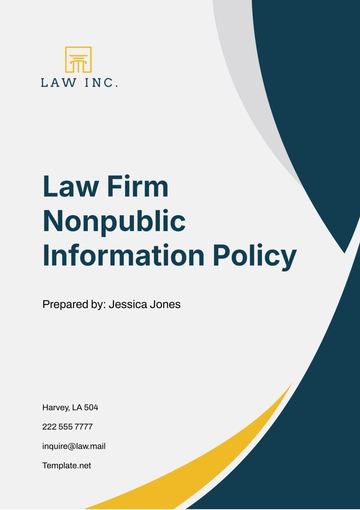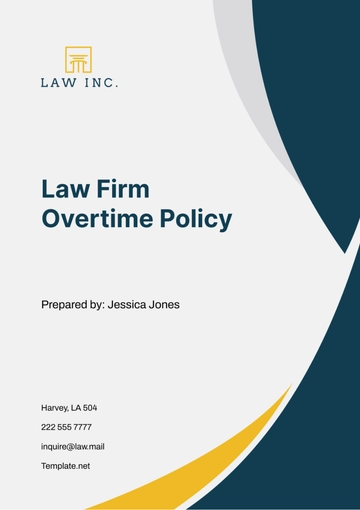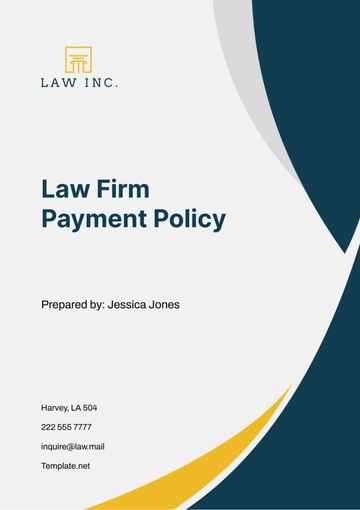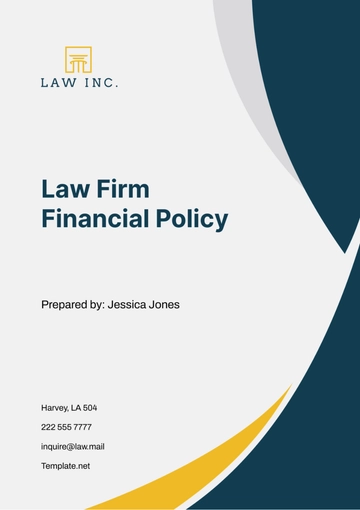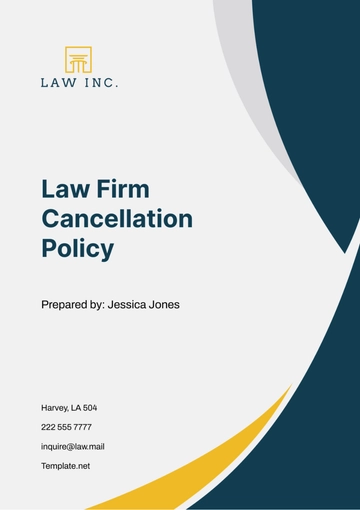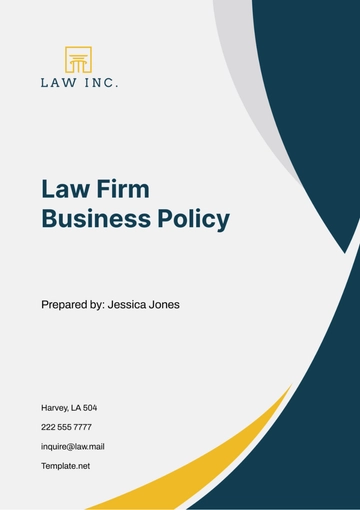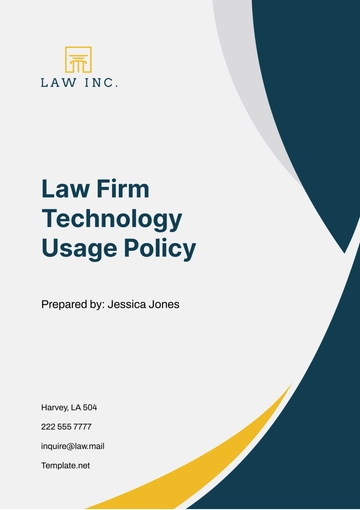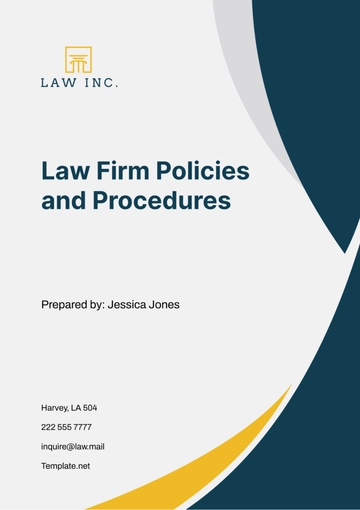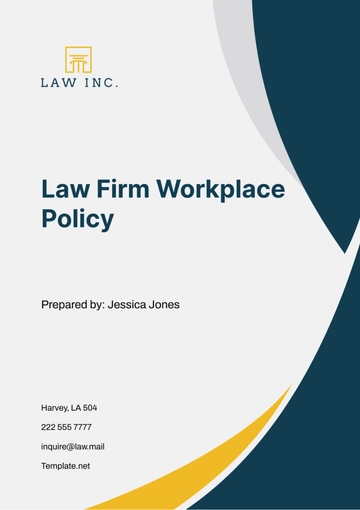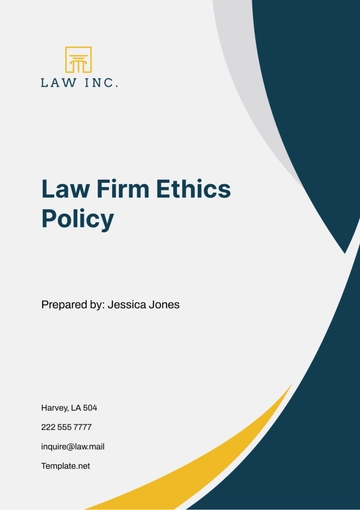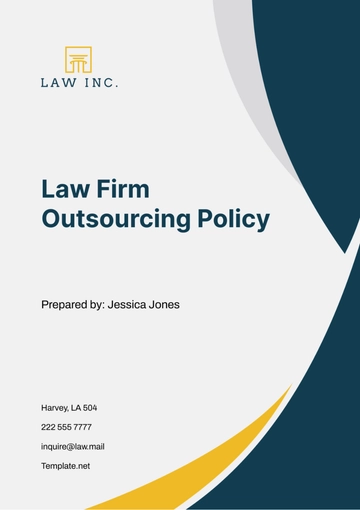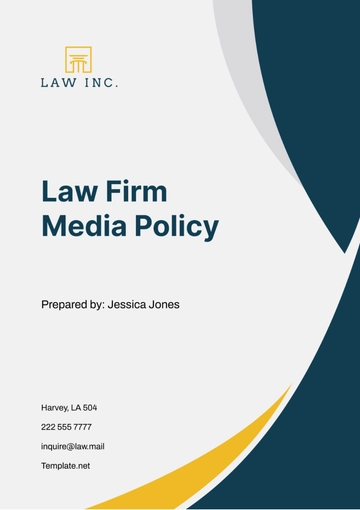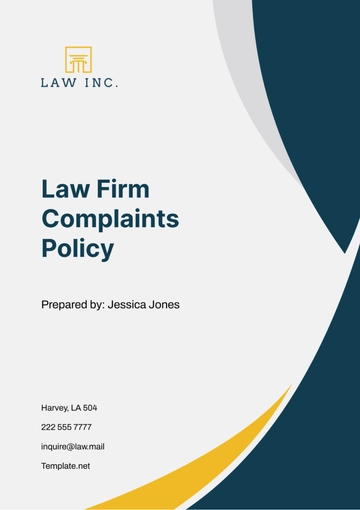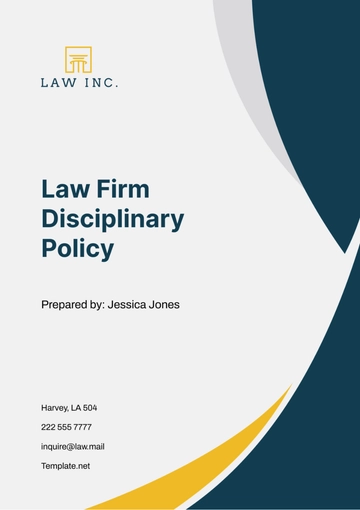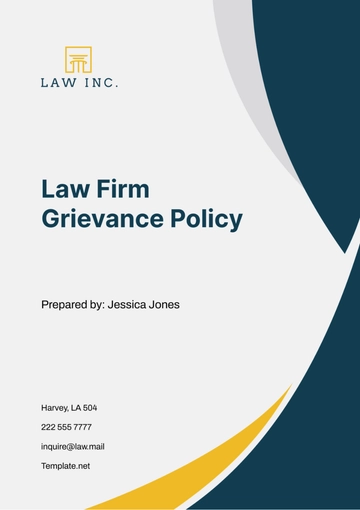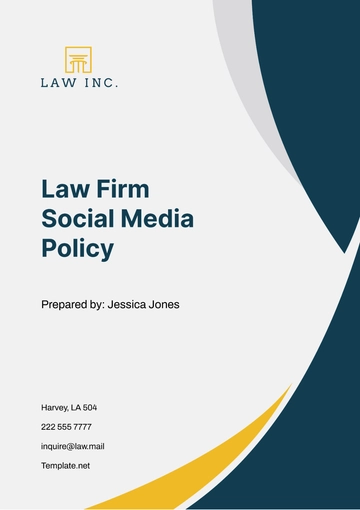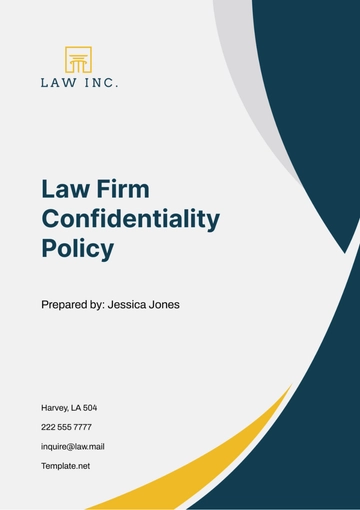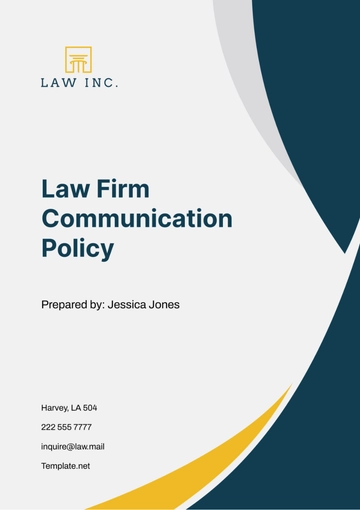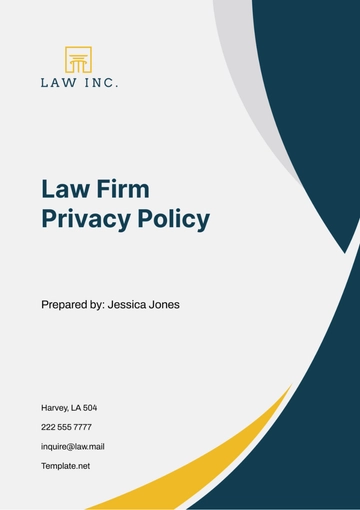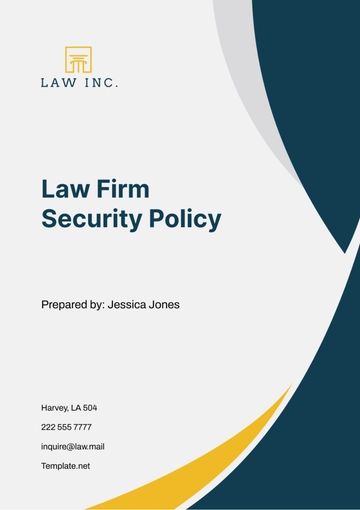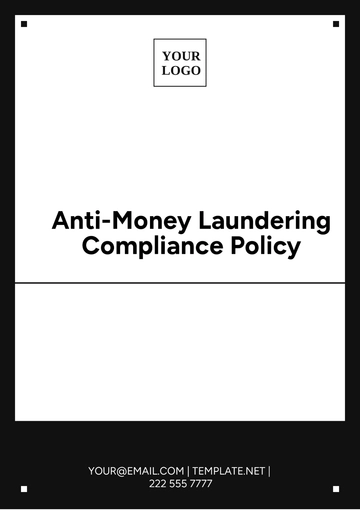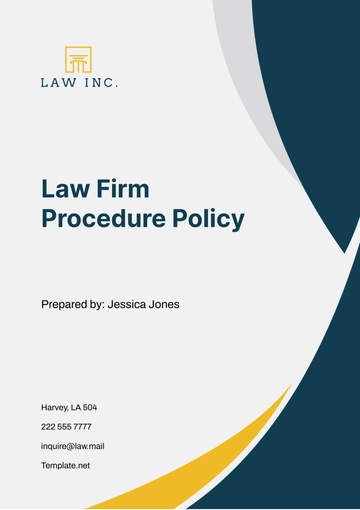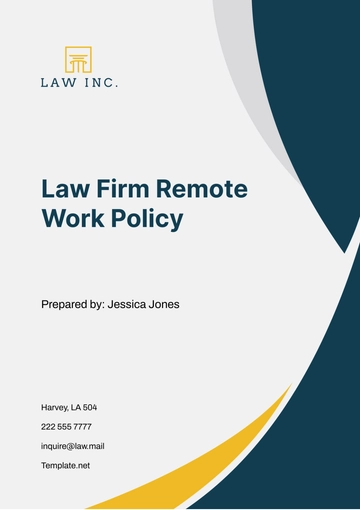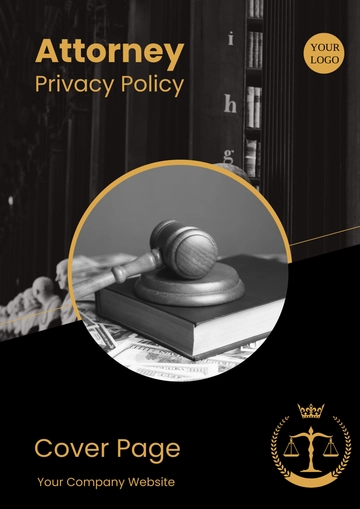Free Law Firm Leave Policy
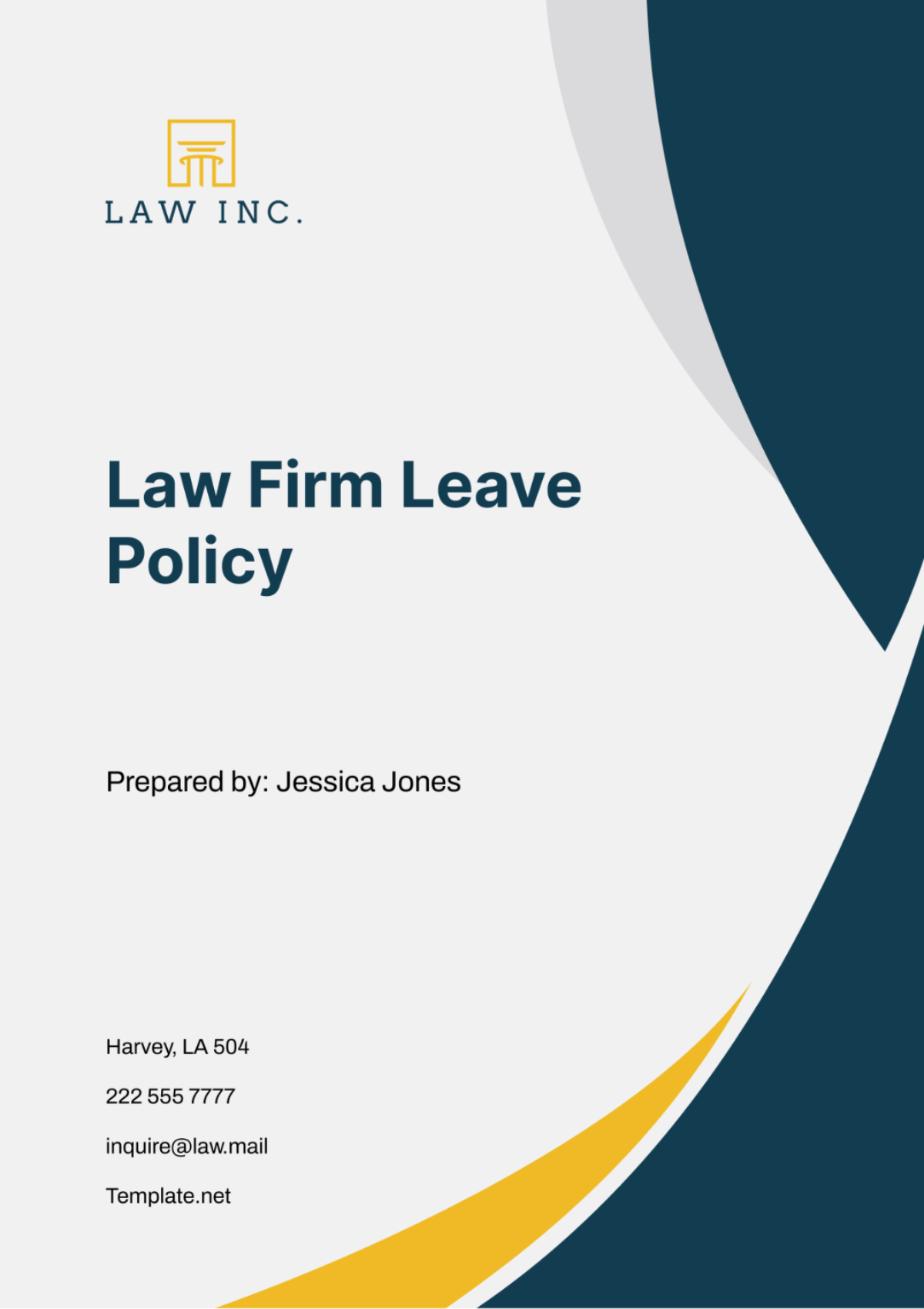
[YOUR COMPANY NAME] has established this Law Firm Leave Policy to provide a clear, fair, and legally compliant framework for managing various types of leave within our organization. This policy is designed to support our employees’ well-being and personal needs while ensuring the firm’s operational effectiveness.
1. Objective
The principal aim of this Law Firm Leave Policy is to delineate the regulations surrounding leaves of absence in a manner that is transparent and uniformly enforceable. This ensures that all employees clearly understand their leave rights and responsibilities, promoting fair and equitable application across the board. By facilitating necessary time-off, we support our employees' well-being and personal needs, which in turn contributes to sustaining the firm’s operational integrity and effectiveness. Moreover, this policy aims to enhance workforce morale and productivity by recognizing and accommodating the diverse needs of our employees, fostering a supportive workplace culture.
2. Eligibility
2.0 General Eligibility
All employees of [YOUR COMPANY NAME], whether full-time, part-time, or on contractual terms, are entitled to leaves as specified in this policy beginning from their date of hire. This inclusive approach ensures that every member of our team can benefit from well-defined leave entitlements, reflecting our commitment to a supportive and flexible work environment.
2.1 Probationary Period
For employees in a probationary period, typically the first 90 days of employment, leave entitlements are adjusted as follows:
Annual Leave: Accrual begins from the first day, but usage is permitted only upon completion of the probationary period. Leave during this period is pro-rated based on the duration of employment.
Sick Leave: Immediate eligibility from the first day of employment, recognizing the importance of health and well-being from the outset.
These provisions are designed to integrate new hires smoothly into our workforce while maintaining a balanced approach to leave benefits.
3. Types of Leave
Each category of leave is crafted to meet specific personal or professional needs of our employees, ensuring they have the support necessary to manage life's various demands without compromising their professional responsibilities.
3.1 Annual Leave
Entitlement: Employees are entitled to 20 working days of paid leave annually, which do not include weekends or public holidays.
Booking Requirements: Leave should be scheduled no less than 30 days in advance and requires the approval of the department head to ensure minimal disruption to the firm’s operations.
3.2 Sick Leave
Entitlement: Up to 12 paid sick days are available annually to address health issues.
Documentation Requirements: For absences extending beyond two consecutive days, a medical certificate must be presented as evidence of illness.
3.3 Maternity/Paternity Leave
Maternity Leave: Employees are granted 26 weeks of paid leave.
Paternity Leave: Employees are granted 3 weeks of paid leave.
Documentation: Proof of pregnancy or birth is required, supporting our commitment to family welfare.
3.4 Bereavement Leave
Entitlement: 5 days of paid leave are available in the unfortunate event of the death of an immediate family member, acknowledging the need for time to grieve.
3.5 Jury Duty
Entitlement: Leave is granted for the duration required by the court, and employees will receive their full salary minus any compensation received from court services.
3.6 Study Leave
Entitlement: Employees pursuing further education relevant to their roles may avail up to 15 days of paid leave annually.
Application: Submission of enrollment proof in a relevant academic program is required.
3.7 Personal Leave
Entitlement: 5 days of unpaid leave are available for personal matters not otherwise covered under other leave categories, providing flexibility for unforeseen personal obligations.
Notice Requirements: Except in emergency situations, requests should be submitted at least 14 days in advance.
4. Procedure to Apply for Leave
The process for applying for leave is designed to be straightforward and accessible, ensuring all employees can manage their leave efficiently and without undue burden.
4.1 Submission
Platform: All leave requests must be submitted through the company’s dedicated HR portal. This centralized system allows for a streamlined, trackable, and secure process to manage and review leave applications.
User Guide: Comprehensive instructions and support are available on the portal to assist employees in using the system effectively.
4.2 Approval
Process: Leave approval requires confirmation from the immediate supervisor followed by validation from the HR department. This two-tiered approach ensures that all leaves are considered carefully with respect to team needs and operational demands.
Timeline: Requests must be made at least two weeks prior to the commencement of the leave to allow adequate time for all necessary arrangements to be made to cover the employee’s absence.
4.3 Emergency Leave
Immediate Needs: In cases of emergency, employees are permitted to give verbal notification to their supervisor, followed by a formal application submitted through the HR portal within 24 hours. This provision ensures that employees can attend to urgent matters promptly while maintaining the necessary administrative records.
5. Leave Carryover and Encashment
Flexibility in managing leave is crucial to accommodating personal circumstances and maintaining morale and productivity within the team.
5.1 Carryover
Limit: Employees may carry over up to 5 days of unused annual leave into the next calendar year. This allows for greater flexibility in managing personal time and supports continuous work-life balance.
Management: Carryover requests must be approved by the HR department, ensuring that accumulation of leave does not adversely affect the firm’s operations.
5.2 Encashment
Conditions: Leave encashment is offered at the discretion of the company and may be availed upon employment termination or retirement.
Calculation: The amount of encashed leave is calculated based on the employee’s current salary rate and the number of unused leave days, providing a beneficial supplement to the employee’s transition or retirement phase.
6. General Provisions
It is essential to specify the boundaries and expectations related to leave to ensure fairness and maintain discipline within the workplace.
6.1 Unapproved Leave
Consequences: Taking leave without prior approval may result in disciplinary action. The nature of these actions can range from written warnings to suspension, depending on the severity and frequency of the violations.
Transparency: Details of potential disciplinary actions are clearly outlined in the employee handbook and the HR portal to ensure employees are fully aware of the implications of unapproved leave.
6.2 Modifications
Flexibility: All leaves are subject to modification based on business needs. The company is committed to providing reasonable notice to affected employees to minimize any potential inconvenience or disruption.
Adjustments: Modifications will be communicated through direct supervisor interactions and updates on the HR portal, ensuring that all parties are informed promptly and adequately.
6.3 Review and Feedback
Continuous Improvement: The leave policy is reviewed annually to adapt to changing legal requirements and to better meet the needs of our employees.
Employee Input: Feedback is solicited from staff through surveys and suggestion boxes placed on the HR portal, allowing employees to contribute to the evolution of the policy.
7. Amendments
7.1 Policy Review and Update
Review Cycle: This policy is subject to periodic reviews to ensure that it remains relevant and effective in meeting both the needs of our employees and the operational requirements of the firm.
Updating Process: Amendments may be made to reflect changes in legislation, company requirements, or employee feedback. This ensures that our practices are always compliant and aligned with best practices.
7.2 Employee Involvement
Feedback Mechanism: Employees are encouraged to provide feedback on the leave policy annually through structured surveys and focus groups, ensuring their voices are heard and considered in policy formulation.
Communication: Any significant changes to the policy will be communicated to all employees at least one month in advance through email, meetings, and posts on the HR portal, ensuring adequate time for adjustment and understanding.
8. Legal Compliance
8.1 Alignment with Laws
Compliance: This policy will be rigorously maintained in alignment with local, state, and federal laws governing employment and leave rights, ensuring the firm operates within legal parameters.
Legal Updates: The HR team will stay informed of all relevant legal updates to proactively adjust the policy as needed.
8.2 Audits
Regular Audits: Regular compliance audits will be conducted to verify adherence to all applicable laws and policy requirements.
Gap Identification: Any gaps identified during audits will be promptly addressed through policy revisions or enhanced employee training, maintaining legal and ethical standards.
9. Diversity and Inclusion
9.1 Commitment to Diversity
Cultural Sensitivity: Recognizing the multicultural nature of our workforce, we are committed to accommodating cultural, religious, and personal needs that may require deviations from standard leave practices.
Case-by-Case Evaluation: Requests for special accommodations are handled sensitively and on a case-by-case basis to ensure fairness and respect for all employees.
9.2 Inclusive Policies
Inclusion Training: HR and management teams will receive regular training on diversity and inclusion to better understand and implement accommodations effectively.
Review for Bias: Policies will be regularly reviewed to identify and eliminate any unconscious biases or barriers that may affect the inclusivity of our leave practices.
10. Technology and Accessibility
10.1 HR Management System
State-of-the-Art Technology: The firm employs a sophisticated HR management system for managing all leave applications. This system ensures a seamless, user-friendly, and efficient process for both applying for and managing leaves.
Accessibility Features: The system includes features such as language options, mobile access, and visual aids to accommodate diverse employee needs and tech proficiencies.
10.2 Continuous Improvement
System Reviews: The technology used will be regularly reviewed and updated to ensure it meets the evolving needs of the firm and its employees. This includes upgrades to enhance functionality and security.
Employee Training: Regular training sessions will be offered to all employees to ensure they are comfortable and proficient in using the HR management system, maximizing its benefits for their leave management needs.
11. Contact Information
For questions or clarifications about this policy, please contact [YOUR COMPANY NAME] at [YOUR COMPANY EMAIL]. Our HR department is committed to providing support and guidance on leave-related matters.
Effective Date
This policy is effective from January 1, 2050, and supersedes any previous leave policy documents.
This comprehensive approach ensures that [YOUR COMPANY NAME] supports its employees while maintaining high standards of operational efficiency and legal compliance.
- 100% Customizable, free editor
- Access 1 Million+ Templates, photo’s & graphics
- Download or share as a template
- Click and replace photos, graphics, text, backgrounds
- Resize, crop, AI write & more
- Access advanced editor
Discover the quintessential Law Firm Leave Policy Template exclusively on Template.net. This meticulously crafted document is your ultimate solution for seamless leave management. Effortlessly editable and fully customizable with our AI editor, it empowers you to tailor policies to your firm's unique needs. Streamline your leave procedures with professionalism and precision today!
You may also like
- HR Policy
- Restaurant Policy
- Company Policy
- Accounting Policies and Procedures
- Website Policy
- Privacy Policy
- Safety Policy
- School Policy
- IT and Software Policy
- Law Firm Policy
- Construction Policy
- Interior Design Policy
- Travel Agency Policy
- Education Academic Policy
- Security Policy
- Real Estate Policy
- Expense Policy
- Software Policy
